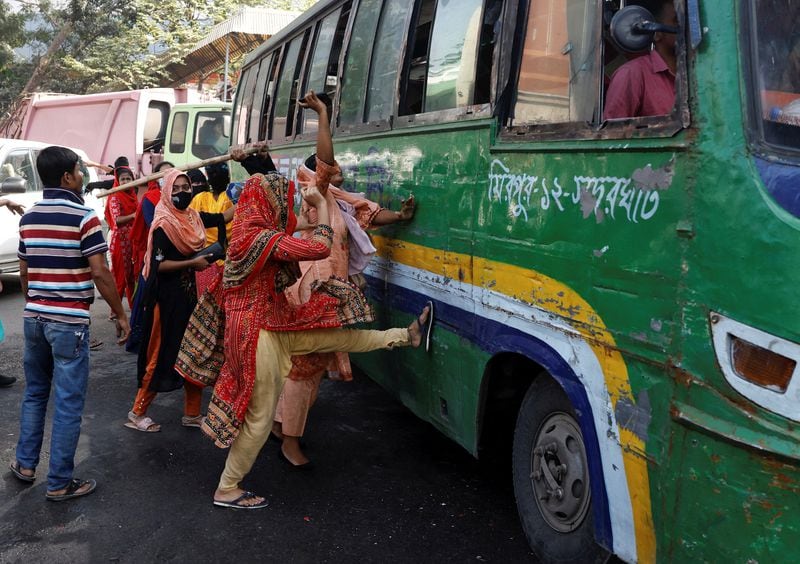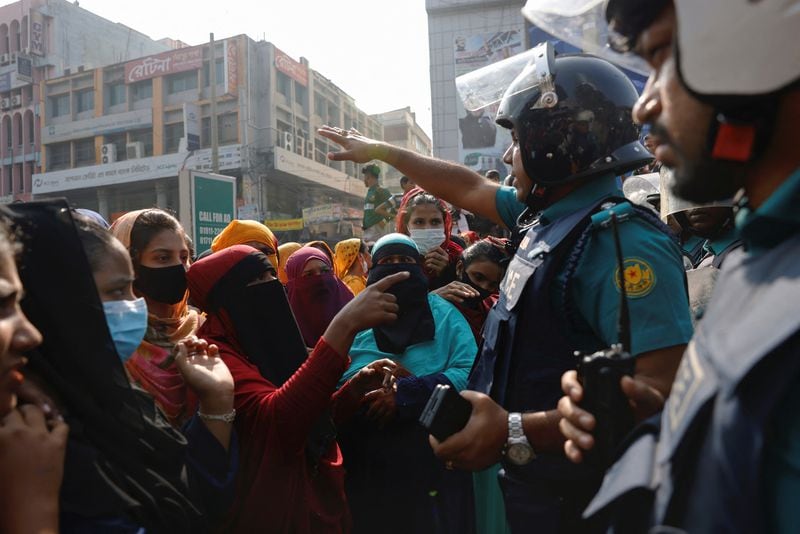Will major Western low-cost fashion brands dip into their wallets to pay the wage increases agreed in Bangladesh? This is what employers in the local textile industry are demanding, after accepting a 60% increase in the minimum wage.
Officially, H&M, Zara, Adidas and other brands are the best friends of Bangladeshi workers. Eighteen companies, mostly American, wrote to Prime Minister Sheikh Hasina last month, calling for “peaceful negotiations to set a minimum wage that covers the basic needs of workers.” His wishes did not find much response in Dhaka.
The confrontation turned into a bloodbath, with four strikers killed. And a great disappointment among the workers. They demanded a minimum wage of $210 per month. From December 1, they will only receive half. Even though this represents an increase of 60% compared to the minimum wage, which has not changed for five years, it is far from enough to compensate for the loss of purchasing power caused by the stagnation of wages and, above all, inflation.
Talks
Beyond sympathy, will the big brands pay their suppliers more to cover the increase in wages? Nobody really believes it. Bangladeshi builders are among the most skeptical. They know from experience that, when negotiating a contract, their clients are the first to demand discounts. Above all, in the current context of generalized crisis in the sector.

Last month, Bangladesh’s textile exports fell by 14%. This increase in wages makes them particularly nervous. There is already talk of a catastrophe for the country’s 4,000 factories and their four million employees.
Decent salaries?
The economic model of low-cost fashion is based on low wages in countries in the South. But in this part of the world, the low-wage scale is relatively open. In Vietnam or Cambodia, wages in the textile sector are two to three times higher than in Bangladesh.
To become the world’s second largest textile producer, behind China, Bangladesh has crushed the wages of its textile workers. They are now among the lowest in the world, just above those of Pakistan and Burma. Increasing them will not challenge the fast fashion business model, but it will lead to a reduction in benefits for both suppliers and customers.

The work of these fashion workers represents 10% of the costs of Bangladeshi manufacturers and only 1% of the final price in stores. Large brands are therefore best placed to contribute to wage increases.
It’s hard to see who can force these brands to do anything other than their customers. If they join the cause of Bangladeshi workers, they will have strong incentives to do so. But unlike the Rana Plaza fire a decade ago, Western consumers have yet to be affected by its cause.
Source: Latercera
I’m Scott Moore, a professional writer and journalist based in the US. I’ve been writing for various publications for over 8 years now, and have been working as an author at athletistic for the past five years. My work has been featured by some of the leading sports websites and magazines across Europe.


